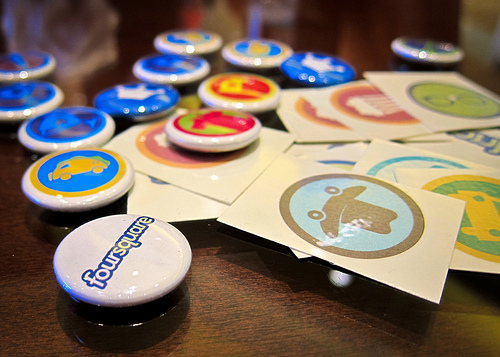 Gamification is the use of game mechanics to increase user engagement.
Gamification is the use of game mechanics to increase user engagement.
Most companies are doing it all wrong.
I see a lot of companies try to use gamification in their product to increase their user activity levels. I also have a lot of people ask me about how to use gamification in their communities to increase member engagement.
The common thinking is that if we add a badge or some other gamification technique to the user experience, that they’ll start to be more active and compete to earn more badges.
That usually doesn’t work. Here’s why…
Gamification doesn’t create value, it represents value.
A user won’t care about earning a badge unless they care about what that badge represents.
In the context of community, that value is likely going to be reputation. That means, if you want them to give a shit about getting a badge or some other ranking, then they have to care what the rest of the community thinks of them.
You see this a lot in forums, as users post more they earn higher rankings. As your rank improves, you earn more respect. It’s a representation of how active you are in the community, which translates to an improved reputation. The “rankings” are simply a representation of that reputation.
Now in video or mobile games, they might be able to get away with creating perceived value out of digital rewards that have no social aspect. But that’s because they’re games, they’re fun. And there’s a reason pretty much every game has an online leaderboard or some social component today. The social component is what makes people actually care about improving their rank.
Relationships matter.
Do the people in your community know each other? Have they built relationships? If not, then why would they care about their status amongst that group of people? They won’t.
Leaderboards work when we compare ourselves to our friends, people who we know, trust and want to impress. They work when we care about beating the other people in the game. They work when our sense of self-worth becomes tied to our ability to improve our reputation within the network.
It worked for foursquare because being a local app, people found themselves competing with their friends around discovering and frequenting bars and restaurants which they felt improved their reputation. There was an existing social dynamic, and the badges represented something that already felt affected their reputation. You’re cool if you’re the mayor of a cool bar. Your reputation improves when your friends see that you get the jetsetter badge for traveling so much..
Look, gamification is something that sounds nice and has been buzzy for a while now, but all it really means is that by being active a user can improve their reputation.
That should happen naturally, without gamification.
If the members of your community actually connect with each other and feel a sense of pride when they contribute, improving their status amongst the group, then you have a healthy foundation. You can then add badges or scores as a way to more clearly represent a person’s status within the community. THEN gamification can work to increase engagement further because the value behind those badges is coming from an existing reputation network.
Whoever shares this post on twitter and Facebook will advance to Level 2 Reader. Gogogo.
—
Photo Credit: nan palmero via Compfight cc
David Spinks, Co-Founder TheCommunityManager.com was a part of the TCM team from the site’s inception through 2014. He utilized TCM to create the first CMX conference in San Francisco in February 2014, and then ultimately severed ties with TCM and its co-founders.
TheCommunityManager.com, CMXSummit and LetsFeast.com. Lifelong student, community builder and writer.


Hi David, thanks for publishing this article about gamification. We are just about to start implementing gamification and we are anxious to see how it will help our users. You are absolutely right that users have to have a motive to use gamification, as on it’s own, without any purpose will have little or no influence on the engagement.